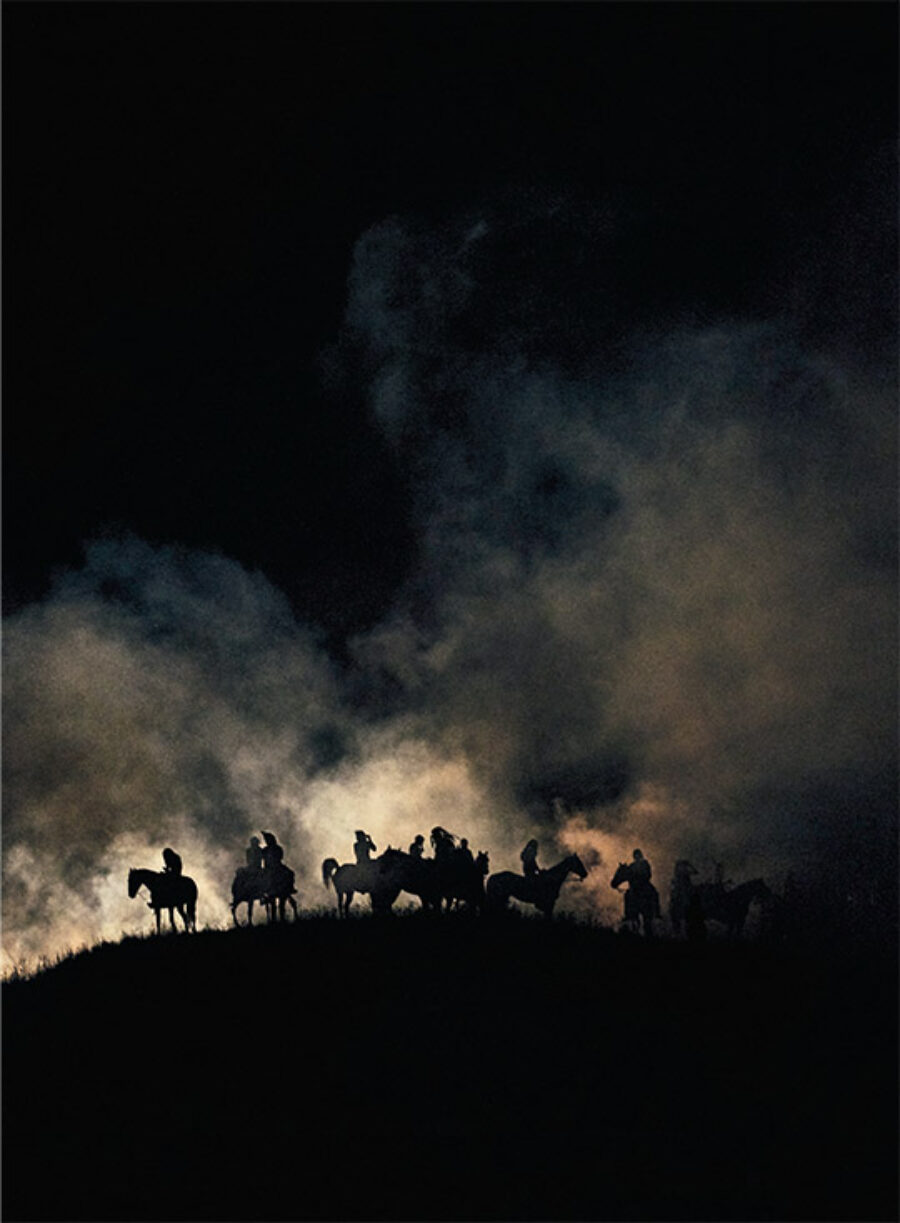
A scene from the play. All photographs from Lusk, Wyoming, July 2019, by Balazs Gardi for Harper’s Magazine © The artist
Every year in Lusk, Wyoming, during the second week of July, locals gather to reenact a day in 1849 when members of a nearby band of Sioux are said to have skinned a white man alive. None of the actors are Native American. The white participants dress up like Indians and redden their skin with body paint made from iron ore.
The town prepares all year, and the performance, The Legend of Rawhide, has a cast and crew of hundreds, almost all local volunteers, including elementary school children. There are six generations of Rawhide actors in one family; three…







































































































